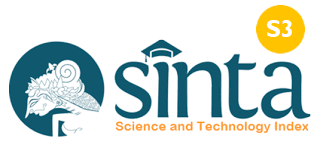Asesmen Diagnostik Dalam Pembelajaran Menulis Teks Tanggapan Di SMPN 3 Merangin
DOI:
https://doi.org/10.37329/cetta.v7i3.3399Keywords:
Minimum Diagnostic Assessmen, Cognitive Level, Response Text WritingAbstract
The ability to write response texts is a crucial aspect of Indonesian language learning at the junior high school level. Minimum Competency Assessment (MCA) is an important instrument to measure this skill. This study aims to evaluate the response text writing ability of grade VIII students of SMPN 3 Merangin using the AKM and identify effective learning strategies. With a qualitative descriptive approach and a case study of 30 students, data were collected through the AKM test and analyzed qualitatively. The results showed significant variations in students' writing literacy skills. A total of 15% of students were in the excellent category, demonstrating the ability to understand, analyze, and compose structured, logical, and critical responses. Meanwhile, 45% of students were in the good category, able to understand and analyze the text well, and compose adequate responses. Furthermore, 35% of students were in the fair category, showing a general understanding of the text but may struggle with in-depth analysis or structured responses. Finally, 5% of students were in the poor category, with writing literacy skills that need to be significantly improved, especially in comprehending, analyzing, and composing clear and coherent responses. The findings serve as a reference for designing more effective learning strategies, especially in literacy development and response text writing. This study provides a comprehensive picture of the ability to write response texts of grade VIII students at SMPN 3 Merangin. The findings can serve as a reference in designing more effective learning strategies, especially in developing literacy skills and writing response texts. AKM is proven to be effective as an assessment tool for writing response texts at the junior high school level and schools are expected to utilize the results of this study to design lessons that focus on strengthening writing literacy.
References
Daryanto. D. (2014). Pengembangan Perangkat Pembelajaran (Silabus, RPP, Bahan Ajar). Yogyakarta: Gava Media
Dinamaryati, D. (2021). Penerapan pendekatan pembelajaran berbasis genre dengan media Pembelajaran kartu topik untuk meningkatkan prestasi belajar Siswa pada mata pelajaran Bahasa Indonesia materi menyusun teks tanggapan di SMPN 4 Bolo kelas IX-3 semester I tahun pelajaran 2020/2021. Jurnal Pendidikan Dan Pembelajaran Indonesia (JPPI), 1(2), 328-339.
Eduka, T. K. (2022). Bestie Book Bahasa Indonesia SMP/MTs Kelas VII, VIII, IX. Jakarta Selatan: Cmedia
Isodarus, P. B. (2017). Pembelajaran Bahasa Indonesia Berbasis Teks. Sintesis, 11(1), 1-11.
Khoirudin, M. (2016). Pengembangan Modul Pembelajaran IPA Biologi Berbasis Inkuiri Pada Materi Interaksi Antar Makhluk Hidup Dengan Lingkungannya. BIOEDUKASI: Jurnal Pendidikan Biologi, 7(2).
Kosasih, E. & Restuti. (2018). Bahasa Indonesia. Jakarta: Erlangga
Mardilah, M. (2022). Belajar Bahasa Indonesia. Nusa Tenggara Barat: Yayasan Insan Cendekia Indonesia Raya.
Maruti, E. S. & Fitriani, W. A. C. (2022). Proyek Keterampilan Menulis Berbahasa Jawa. Magetan: CV. Ae Media Grafika.
Muazinzah, D., & Mulyani, M. (2015). Peningkatan Keterampilan Menulis Teks Tanggapan Deskriptif Melalui Teknik Kalimat Mengalir Dengan Media Gambar. Lingua: Jurnal Bahasa dan Sastra, 11(2).
Muthmainnah, M., La’biran, R., & Mastia, M. (2018). Peningkatan Hasil Belajar Menyusun Teks Tanggapan Kritis Dengan Menggunakan Metode Critical Thinking. Prosiding, 3(1).
Nurdiyanti, E., & Suryanto, E. (2010). Pembelajaran Literasi Mata Pelajaran Bahasa Indonesia Pada Siswa Kelas V Sekolah Dasar. Paedagogia, 13(2), 115-128.
Rachmat, E. (2019). Buku Siswa Bahasa Indonesia. Depok: Penerbit Duta
Rizka, S. T. (2023). Asesmen Diagnostik dalam Pembelajaran Menulis Teks Tanggapan di SMP Negeri 25 Kota Jambi (Doctoral Dissertation, Universitas Jambi).
Satata, S., & Dadi, W. S. (2012). Bahasa Indonesia. Jakarta: Mitra Wacana Cetak.
Sungkono, S. (2009). Pengembangan dan Pemanfaatan Bahan Ajar Modul Dalam Proses Pembelajaran. Majalah Ilmiah Pembelajaran, 5(1).
Susetyo. (2009). Menulis Akademik. Bengkulu: Penerbitan FKIP Universitas Bengkulu.
Susetyo. (2015). Penelitian Kuantitatif dan Penelitian Kualitatif Pengajaran Bahasa dan Sastra Indonesia. Bengkulu: Universitas Bengkulu
Wibowo, H., & Hendriyani, L. (2018). Materi Umum Bahasa Indonesia SMP. Depok: Puri Cipta Media.
Wijayanto, D. (2011). Arah Pendidikan Indonesia di Abad 21. Medan: Library SMAN 1 Teladan
Yulianti, R. (2022). Penggunaan media pembelajaran balon kalimat pada materi membaca teks tanggapan Kelas IX masa pandemi COVID-19 di SMPN 1 Sukaresik. Diksatrasia: Jurnal Ilmiah Pendidikan Bahasa dan Sastra Indonesia, 6(1).
Yusuf. W., & Sawaki, Y. (2009). Pendekatan Diagnosis Kognitif Untuk Penilaian Bahasa: Gambaran Umum. Penilaian Bahasa Triwulanan, 6 (3), 172– 189.
Downloads
Published
How to Cite
Issue
Section
License
Copyright (c) 2024 Sherly Leola, Sandra Tri Febriani, Rustam Rustam, Nazurty Nazurty

This work is licensed under a Creative Commons Attribution-ShareAlike 4.0 International License.
An author who publishes in the Cetta : Jurnal Ilmu Pendidikan agrees to the following terms:
- Author retains the copyright and grants the journal the right of first publication of the work simultaneously licensed under the Creative Commons Attribution-ShareAlike 4.0 License that allows others to share the work with an acknowledgement of the work's authorship and initial publication in this journal
- Author is able to enter into separate, additional contractual arrangements for the non-exclusive distribution of the journal's published version of the work (e.g., post it to an institutional repository or publish it in a book) with the acknowledgement of its initial publication in this journal.
- Author is permitted and encouraged to post his/her work online (e.g., in institutional repositories or on their website) prior to and during the submission process, as it can lead to productive exchanges, as well as earlier and greater citation of the published work (See The Effect of Open Access).
Read more about the Creative Commons Attribution-ShareAlike 4.0 Licence here: https://creativecommons.org/licenses/by-sa/4.0/.





